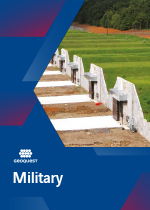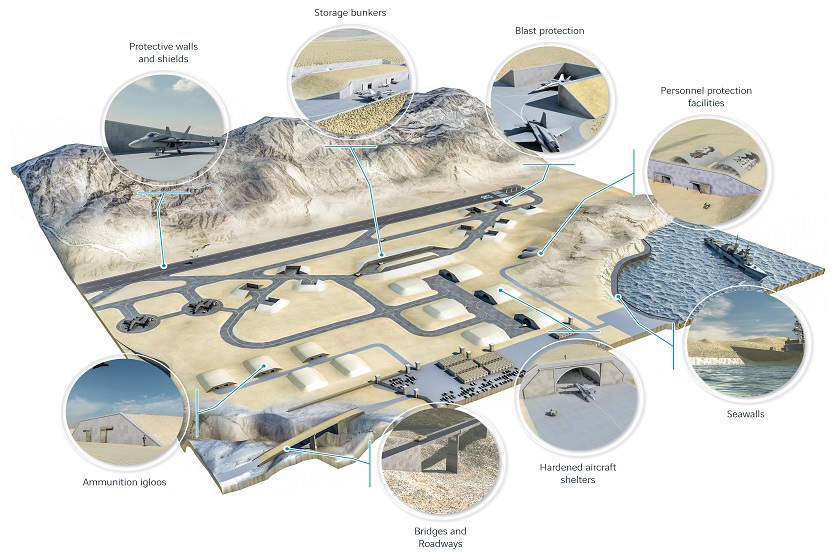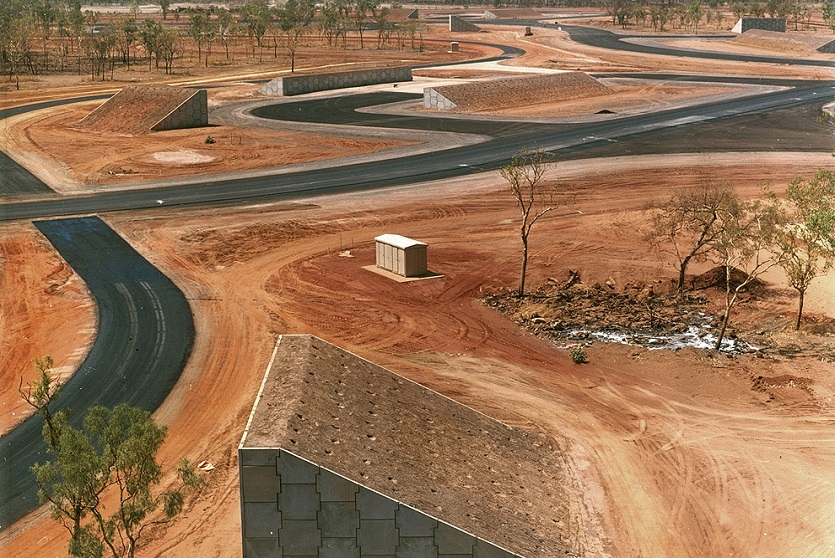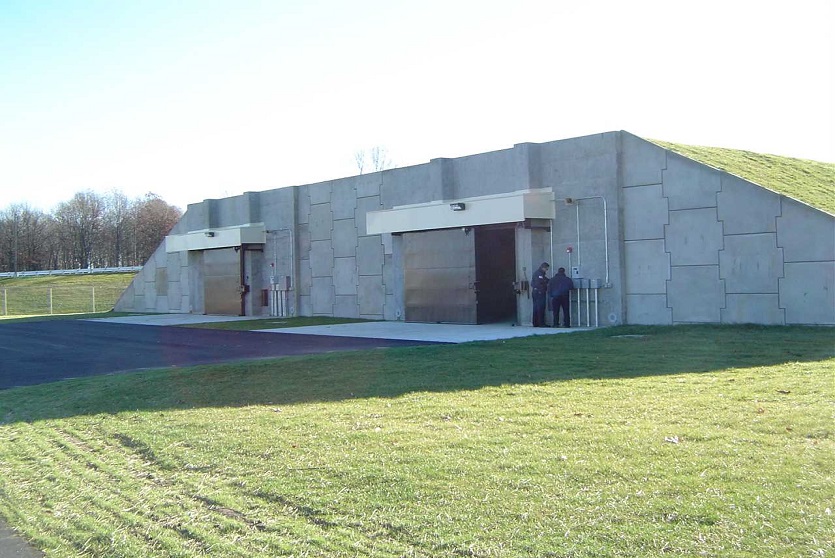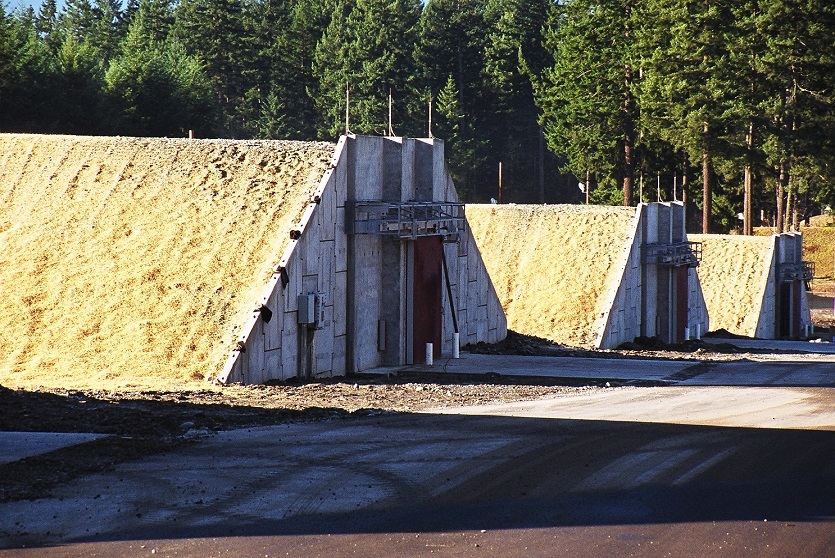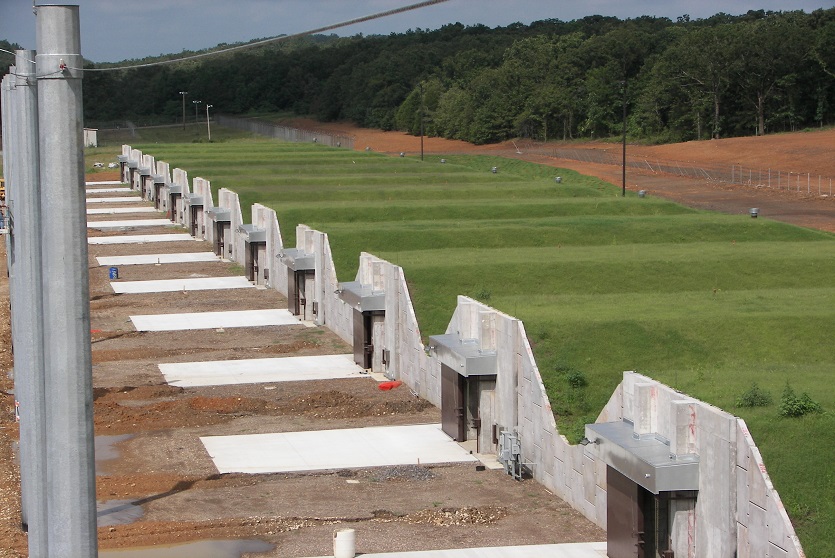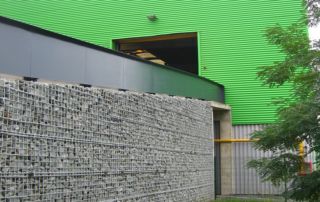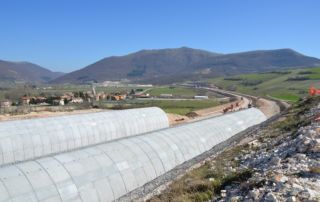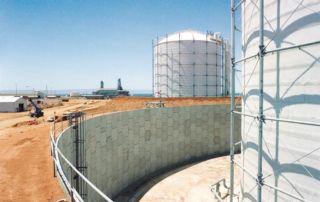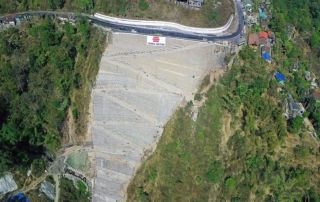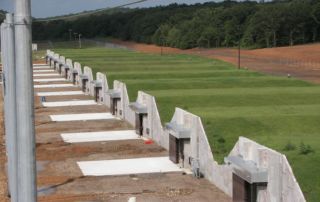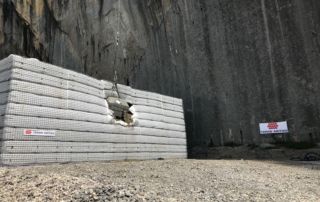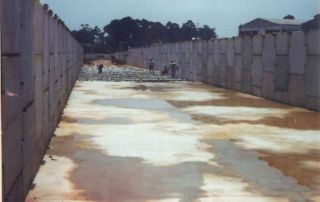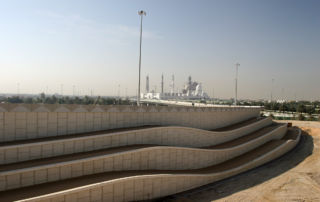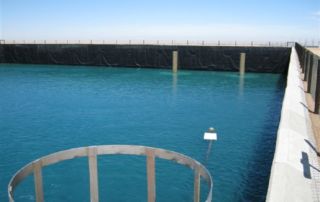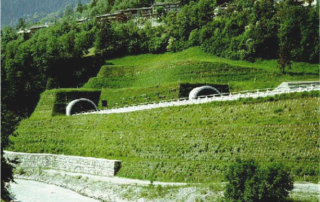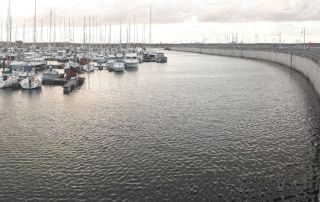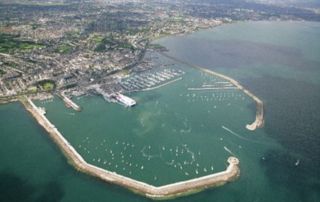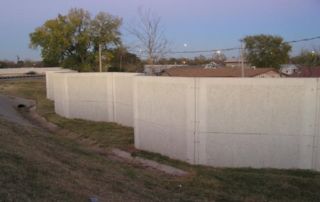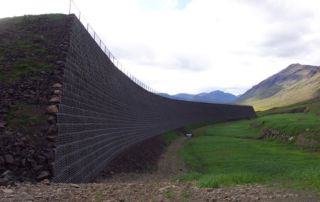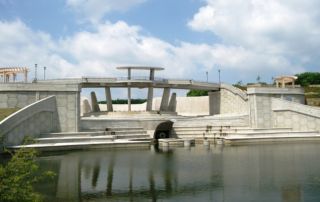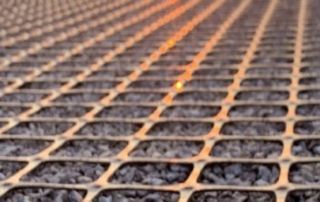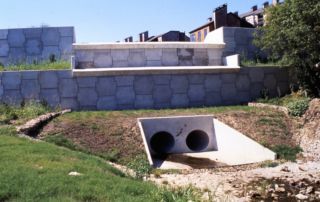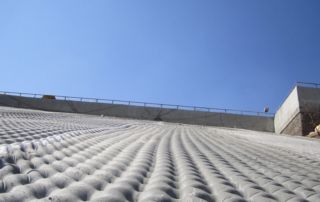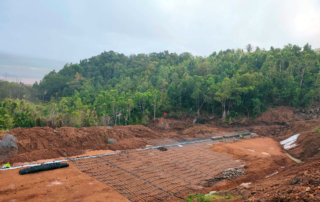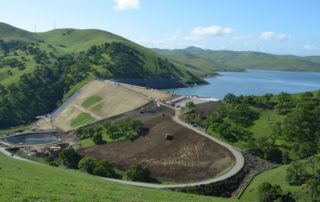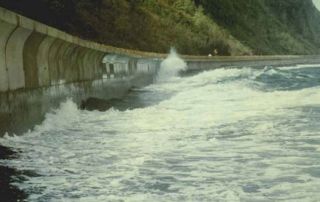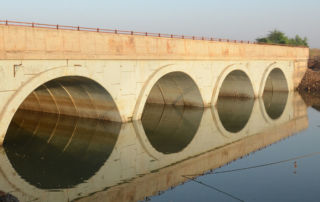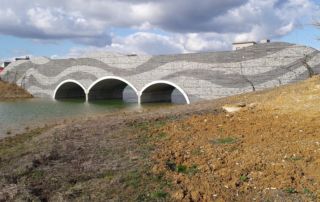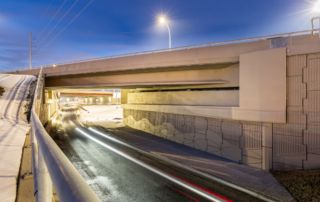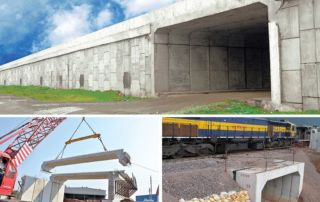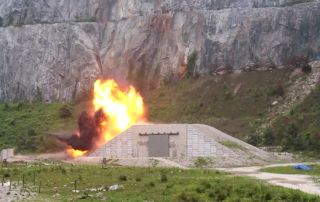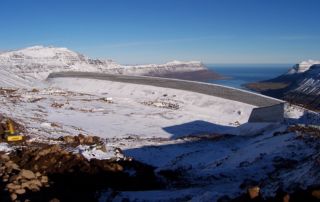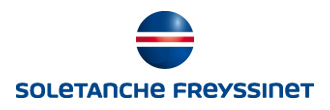For nearly fifty years, Geoquest companies have designed solutions and supplied materials to owners and contractors for the construction of a variety of military facilities and structures.
These have included:
- Ammunition igloos and storage bunkers
- Blast barricades
- Personnel protection facilities
- Weapons testing facilities
- Rocket launching platforms
- Radiation and RFI shielding
- Forced entry fences and ballistic shields
- Military roads and bridges
- Sea walls and wharf docks
Our history working with military agencies
From inception, Reinforced Earth® retaining walls were figured as a logical extension for constructing critical structures to protect against explosions, fire, and bombardment. The technology’s performance had already been established in many previous applications. Ordinary earthen structures offer advantages in protective barrier applications. However, Reinforced Earth® provides the additional benefit of vertical revetments, which not only minimize ground area requirements, but also increase the degree of protection.
Reinforced Earth® has proven to be a highly stable explosion barrier that impedes the propagation of a blast at ground level and absorbs high levels of energy due to its tolerance for deformation. Because it is resistant to multiple fracturing, Reinforced Earth® tends to minimize the dispersal of debris during an explosion while maintaining high levels of resistance to thermal shock.
The use of Reinforced Earth® walls for protective military structures was rapidly developed through a series of full-scale military testing starting in the middle 1970’s. This research and development continues even today, for example in developing state of the art solutions for designing and furnishing special Geoquest MSE “bund” structures for dissipation of blast pressures and projectile impact.
Benefits
Predictable performance
Full-scale testing, actual event forensics data, and numerical modelling of Geoquest protective structures support and validate the predicted performance of your application.
Cost, Quality, and Design Flexibility
Lower in completed cost than alternative soil-reliant structures. Owners and builders can select between steel or geosynthetic reinforcements for both the soil and concrete.
Sustainability
Complete methodology is adaptable for remote area constraints, light equipment, and small working crews. Structures can be designed as permanent or temporary with dismantling and re-use possible.

